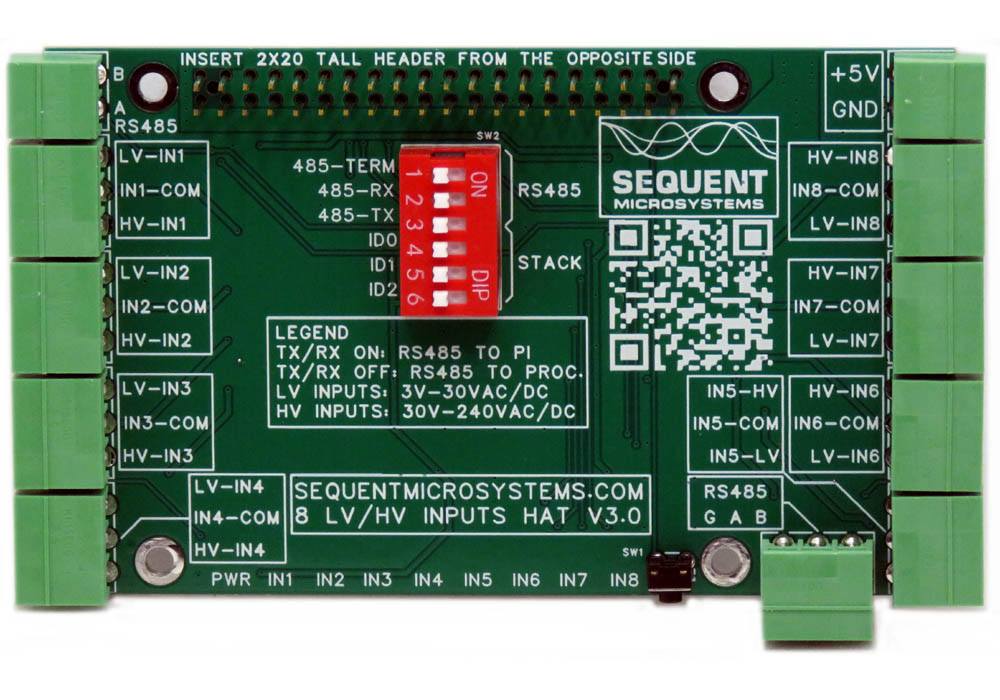
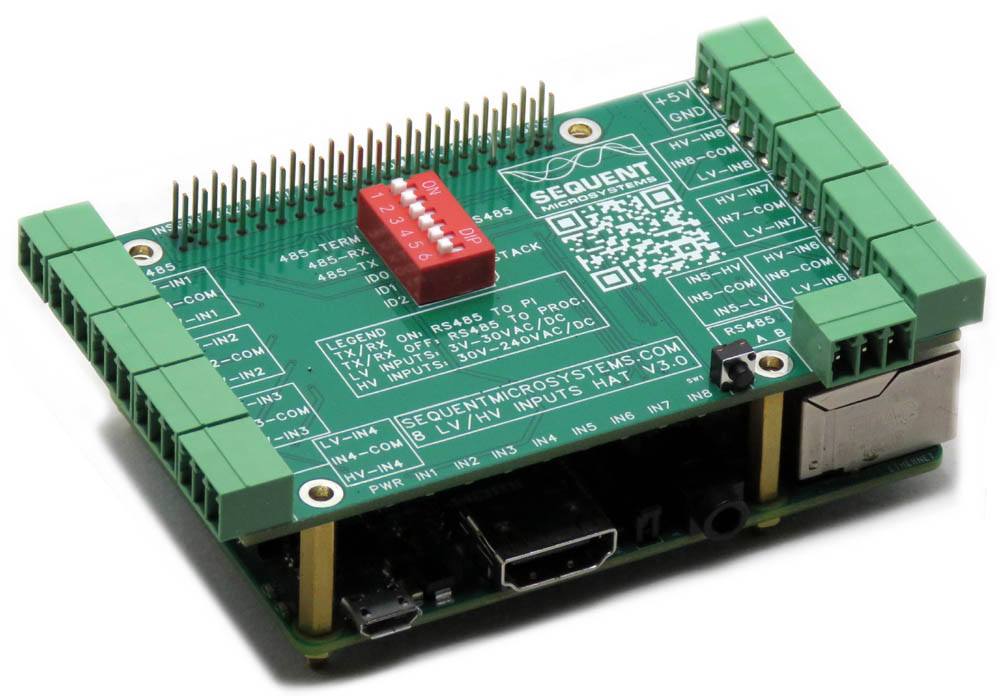
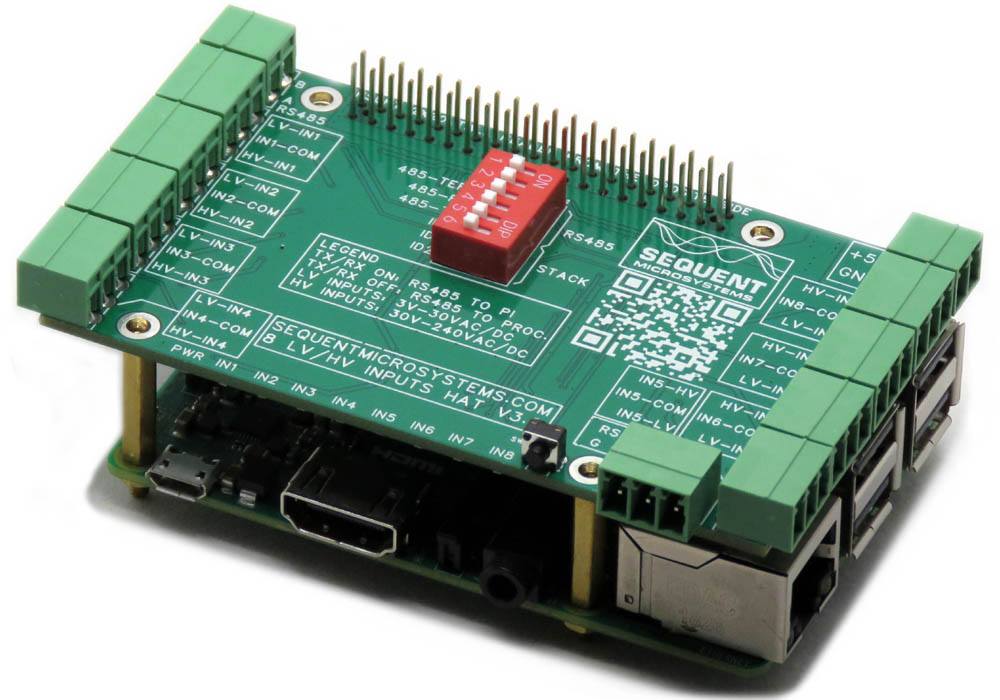
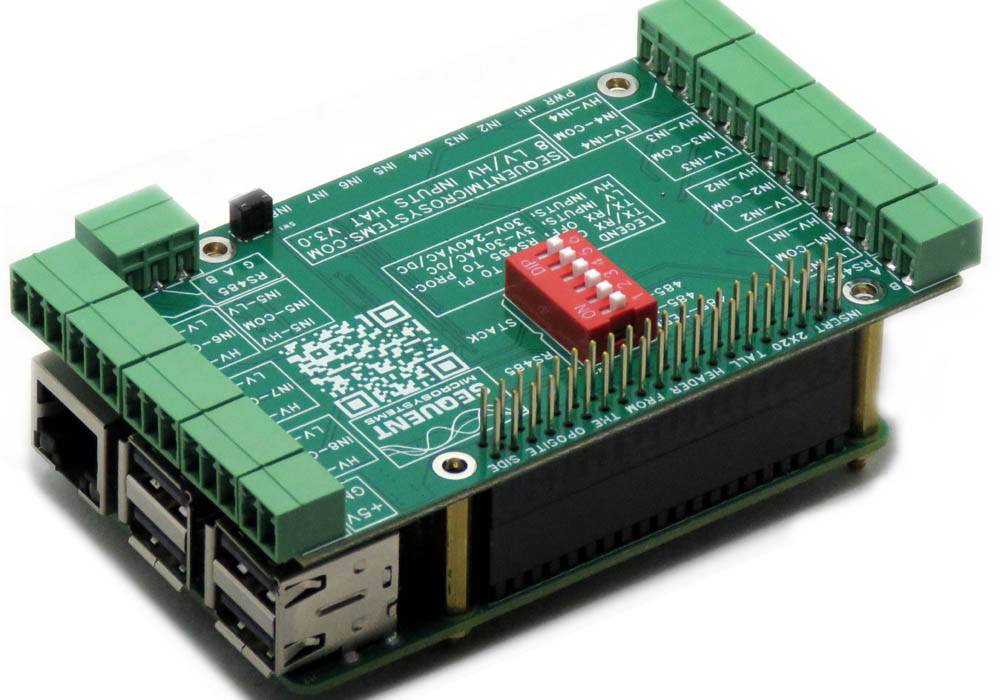
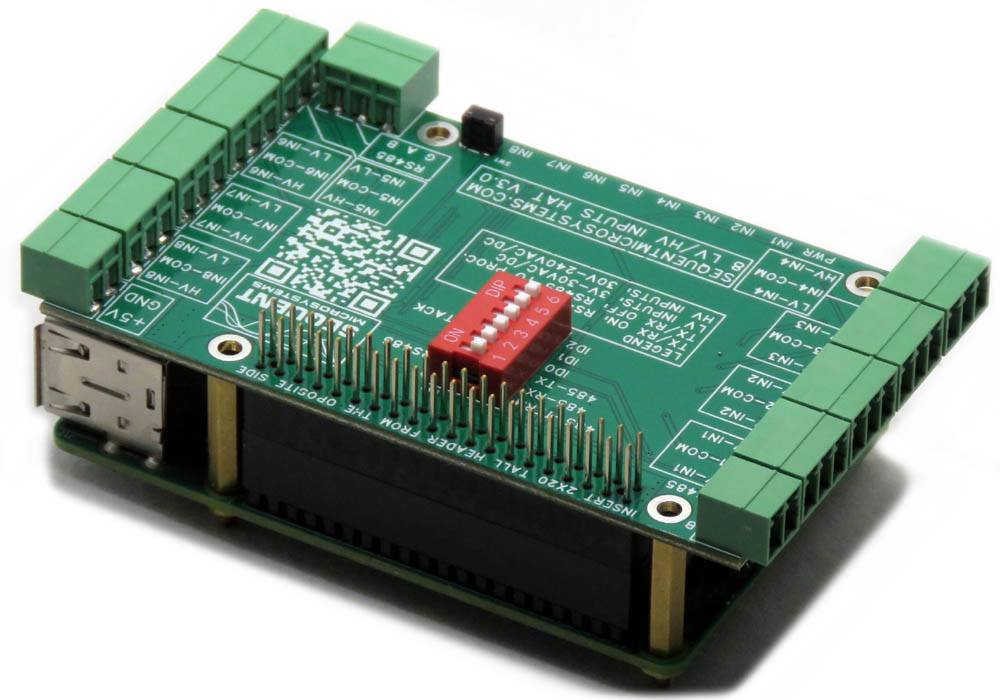
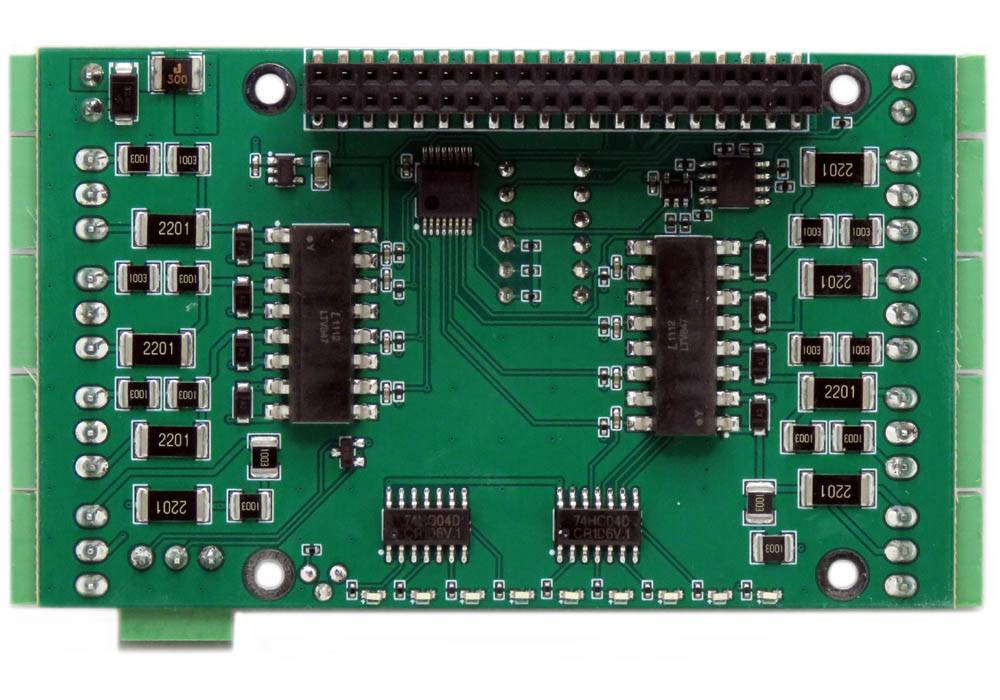
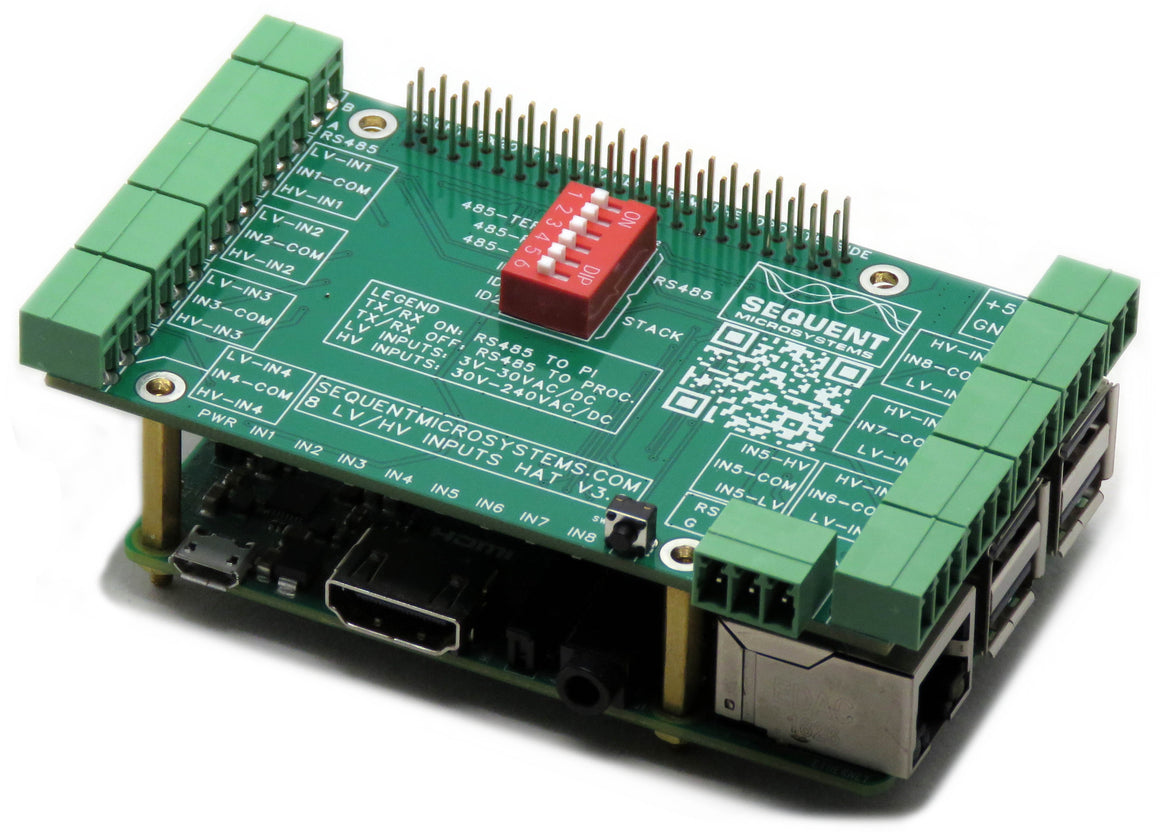






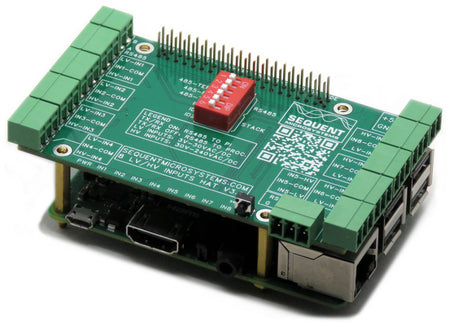
Eight HV Digital Inputs 8-Layer Stackable HAT for Raspberry Pi
Eight opto-isolated inputs 3V-24V or 48V-240V, AC/DC with status LEDs; RS485/MODBUS; Works with Raspberry Pi ZERO to 5.
FEATURES
- Eight HV Digital Inputs 8-Layer Stackable HAT for Raspberry Pi
- Eight layer stackable to 64 inputs
- Works with any Raspberry Pi from ZERO to 5
- Eight digital opto-isolated inputs 3V-24V or 48V-240V AC/DC
- Separate low/high voltage connectors for each input
- Pluggable Connectors 26-16 AWG wires
- Status LEDs on all Inputs
- RS485/MODBUS Port with dual connectors
- Uses only I2C port, all GPIO pins available
- ECCN Code EAR99
- Eight Inputs for Raspberry Pi
- All mounting hardware included: stand-offs, screws and nuts
- Open source hardware and schematics
- Command Line Driver
- Python Library
- Node-Red nodes
- CODESYS Driver
- OpenPLC module
- Home Assistant Integration
DESCRIPTION
LED INDICATORS
A power LED shows when power is applied to the board. One LED for each input shows when the input is activated.
DIP SWITCH CONFIGURATION
A six position DIP switch is used to activate the RS485 port and to select the position of the card in the stack, if multiple cards are used.


RS485/MODBUS PORT
The 16 Solid State Relay Card has an RS485 port which can be driven from the Raspberry Pi. Set both to ON to connect the RS485 port to USART1 of the Raspberry Pi.
When DIP Switches are ON, Raspberry Pi can communicate with any device with an RS485 interface. In this configuration the card is a passive bridge which implements only the hardware levels required by the RS485 protocol.
When DIP Switches are OFF, the Raspberry Pi GPIO pins can be used for other functions. If multiple cards are stacked, only one card can have the DIP Switches ON.
RS485 TERMINATOR
The first position on the DIP switch is the RS485 line terminator. Set it to ON if the card is last on the RS485 chain.

- Power Supply: 5V/8A pluggable connector with reverse polarity protection
- On board resettable fuse: 3A
- Opto-isolated Digital Inputs:
- Input Forward Current: Typical 5 mA, maximum 50 mA
- Low Voltage Input Series Resistor: 2.2K
- High Voltage Input Series Resistor: 120K
- Isolation Resistance: Minimum 1012 Ω

DOWNLOADS
SOFTWARE
ACCESSORIES

YOUR KIT

- Four M2.5x18mm male-female brass standoffs
- Four M2.5x5mm brass screws
- Four M2.5 brass nuts


QUICK START
- Plug your 8-INPUTS card on top of your Raspberry Pi and power up the system.
- Enable I2C communication on Raspberry Pi using raspi-config, instructions here.
- Install the card software from github.com:
- ~$ git clone https://github.com/SequentMicrosystems/8inputs-rpi.git
- ~$ cd /home/pi/8inputs-rpi
- ~/8inputs-rpi$ sudo make install
-
~/8inputs-rpi$ 8inputs -h
The program will respond with a list of available commands.







